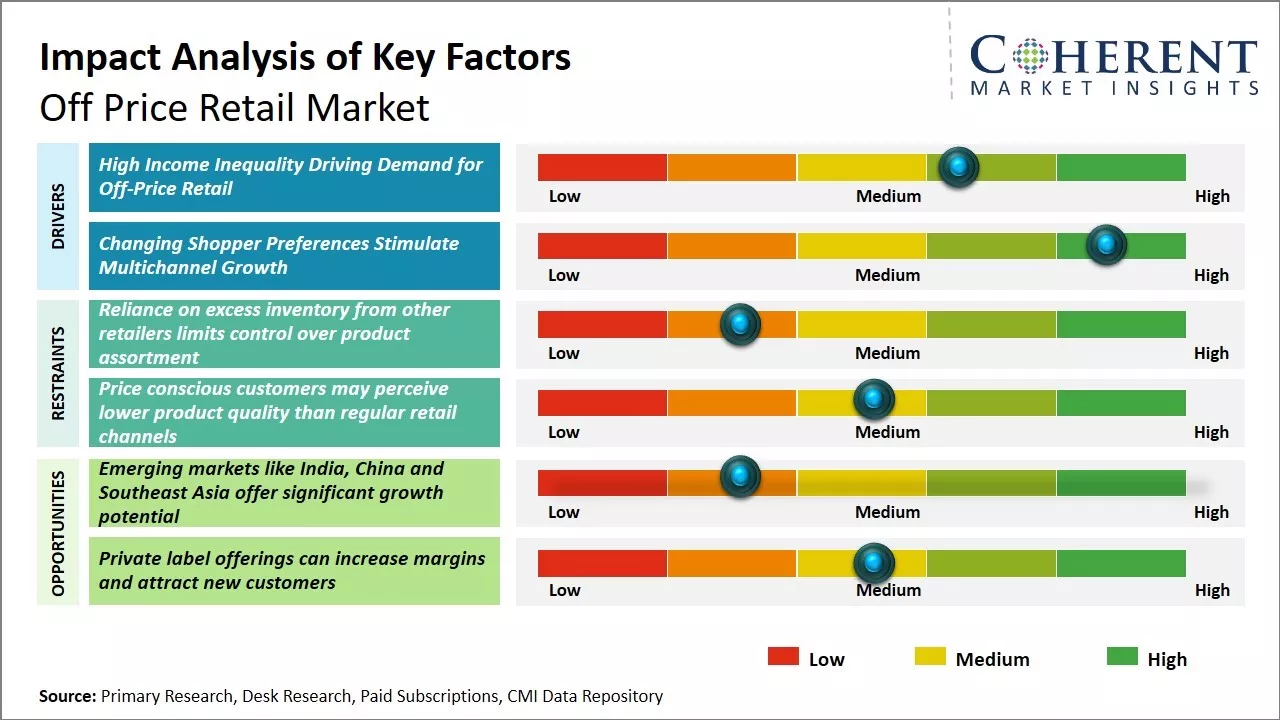The off price retail market is estimated to be valued at USD 372.46 Bn in 2025 and is expected to reach USD 668.30 Bn by 2032, exhibiting a compound annual growth rate (CAGR) of 8.7% from 2025 to 2032.

To learn more about this report, Request sample copy
The sector has benefitted from consumers' attraction towards discounted designer and name brand apparel and accessories. Fast fashion trends that have made consumers switch wardrobes quickly and spend less on each individual garment has further stimulated market expansion. Increased disposable incomes and rising popularity of online shopping amongst younger consumers have additionally supported off price retail sector revenues. However, market players may face challenges from improving economic conditions that could see consumers switch back to full-priced stores again.
High Income Inequality Driving Demand for Off-Price Retail
Income inequality in developed economies has been steadily increasing over the past few decades and this trend will continue into the future. As the gap between high and low income individuals widens, the lower and middle class feel considerable financial pressure to carefully budget their spending. Off-price retail has emerged as an attractive option that allows value conscious shoppers to purchase brand name products at significant discounts compared to traditional retailers. By offering desirable fashion and lifestyle items from top designers and brands at 30-60% lower price points, off-price retailers enable more Americans to affordably indulge in conspicuous consumption without overspending. The psychological need to perceived oneself and family as keeping up with latest trends drives many customers to off-price chains. Here they can find top season's styles and stay consistent with their peers without breaking the monthly budget. Particularly for those with children and young families, cost savings help allocate limited funds across other necessities as well like housing, education, and healthcare. The experience of shopping at outlet malls and big box discount retailers has also become a popular weekend activity and source of entertainment for lower income groups. While the products may not be brand new or in style for the current season, off-price provides sufficient selection and new arrivals to satisfy visual tastes on a constrained income.
Joining thousands of companies around the world committed to making the Excellent Business Solutions.
View All Our Clients